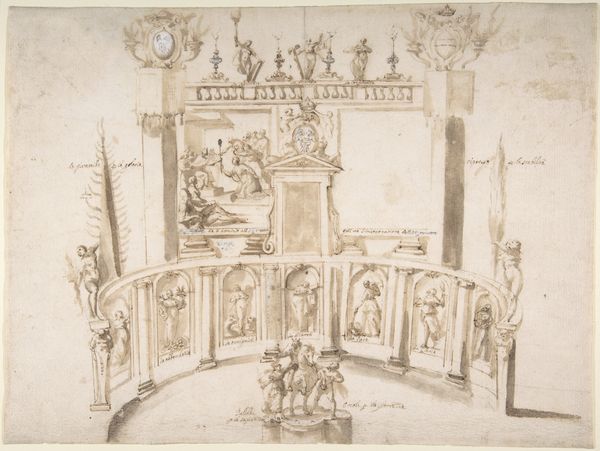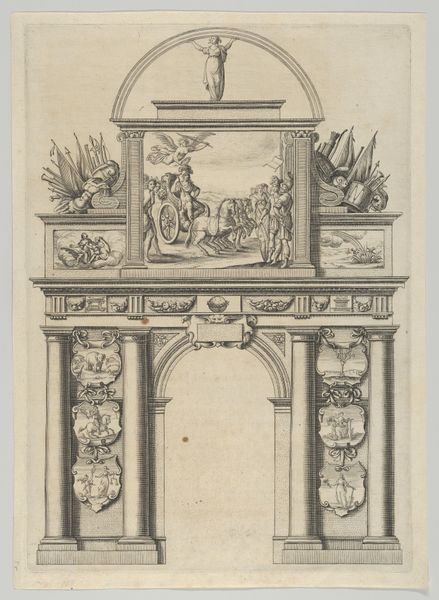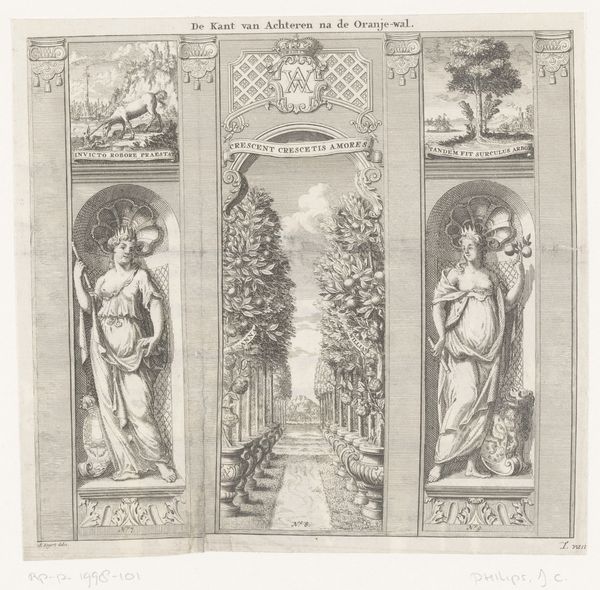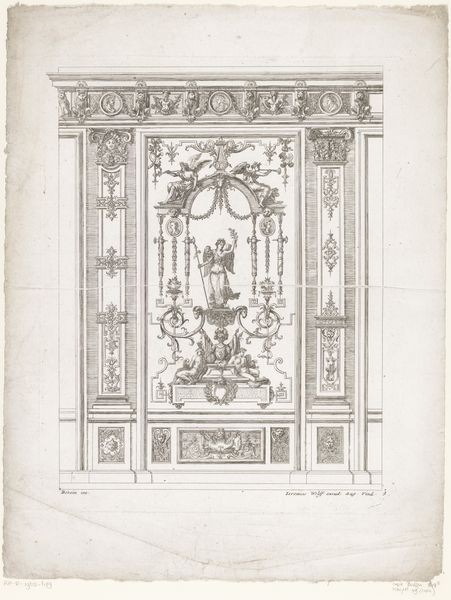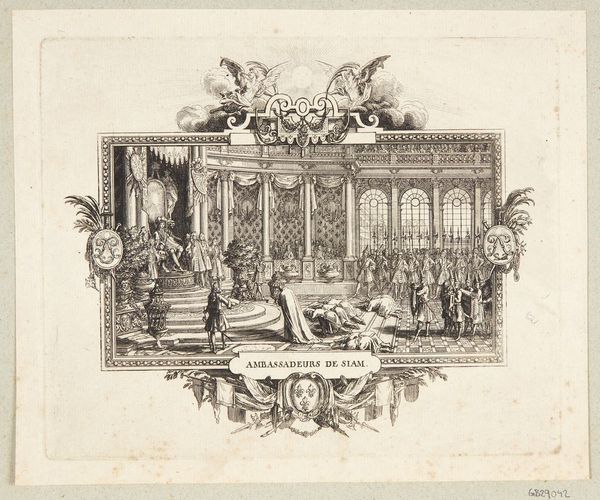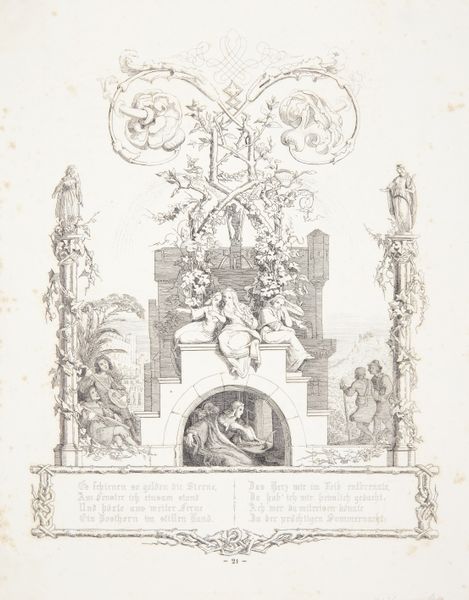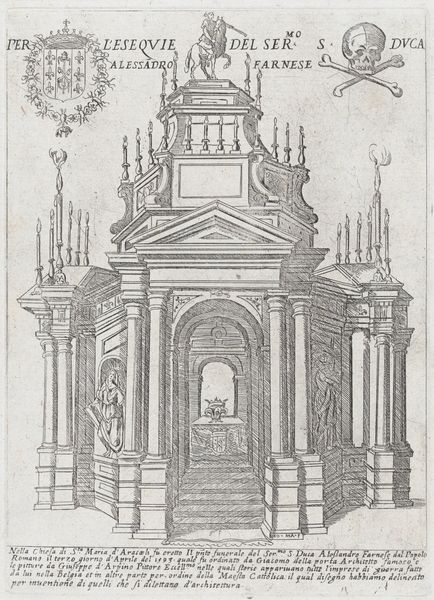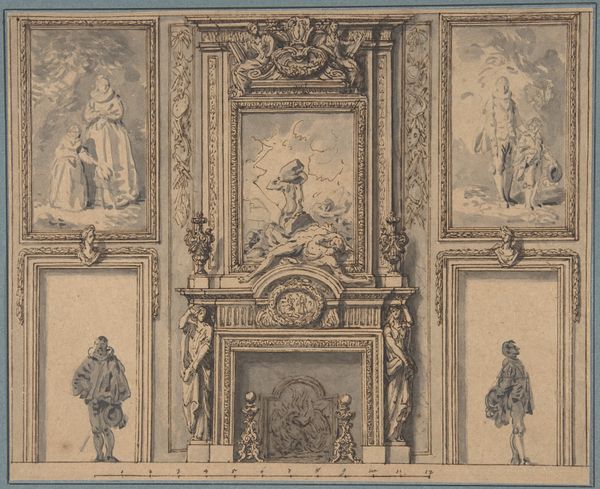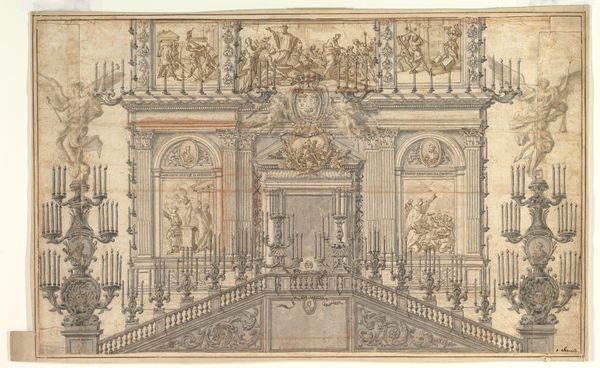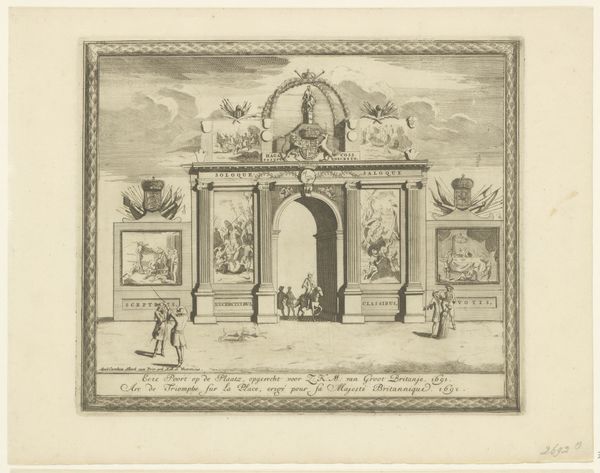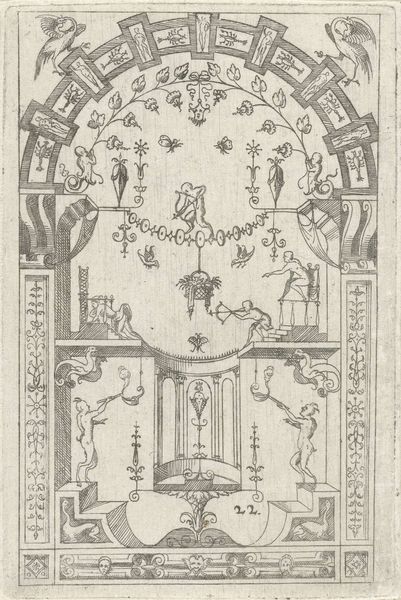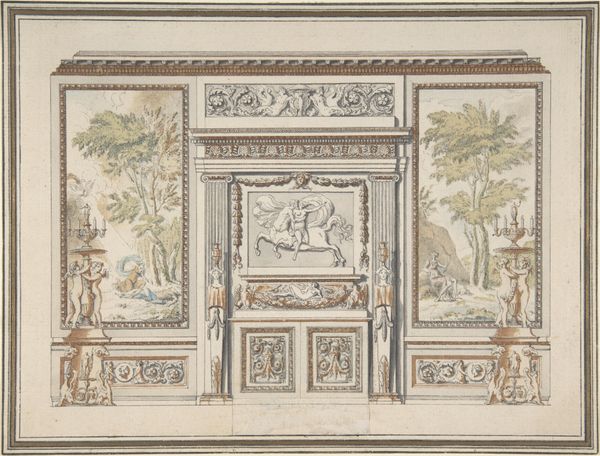
Gezicht op bomenrijen en allegorische figuren in monumentale omlijsting 1631 - 1686
0:00
0:00
israelsilvestre
Rijksmuseum
print, engraving, architecture
#
allegory
#
baroque
# print
#
landscape
#
line
#
engraving
#
architecture
Dimensions: height 398 mm, width 475 mm
Copyright: Rijks Museum: Open Domain
Curator: Let's turn our attention to a print in the Rijksmuseum's collection. It's titled "Gezicht op bomenrijen en allegorische figuren in monumentale omlijsting" by Israel Silvestre, and it dates from sometime between 1631 and 1686. The technique here is engraving, predominantly line work. Editor: This is interesting. My first thought is that this piece creates an elaborate, even theatrical space, like a proscenium arch framing a landscape. There's something undeniably captivating about its balance, between artificial ornamentation and natural expanse. Curator: Indeed. The prominent framing and surrounding architectural features bring up ideas of value, access and even craftsmanship. Who created this architectural 'stage' versus the trees, and what statements did that make? Were different kinds of skilled laborers involved? Editor: For me, it's about how symbols within that space interact. Consider the coat of arms, the flying cherubs – how do they imbue the central landscape with meaning? Are they merely decorative, or are they crucial clues to understanding the image? The classical allusions on the stone plinths reinforce that further. Curator: Certainly, it begs us to reflect upon the systems of patronage that might be at play, not merely the classical aesthetics or symbolic meaning within this scene. Where did the materials to make this engraving come from? How were these distributed, purchased and who might have owned them? How many prints would an engraver be expected to pull in one day to be compensated for their labor? These processes offer valuable historical context. Editor: Precisely! This space becomes a coded declaration. The perspective, the carefully placed allegorical figures— they seem to represent power, refinement, an intentional shaping of nature to reflect certain ideologies and philosophies, probably a celebration of power, maybe aristocracy. Curator: And let's consider, how might viewers across socioeconomic spectra have engaged with an artwork such as this. Editor: True. An engraving makes it more portable and reproducible compared to larger more materially costly works of art. So then, thinking about the audience that might view or collect it really is a relevant lens through which to approach it. This has certainly encouraged me to reconsider my original impressions. Curator: Likewise, pondering about where its materials originated certainly lends another dimension to appreciating the imagery.
Comments
No comments
Be the first to comment and join the conversation on the ultimate creative platform.
